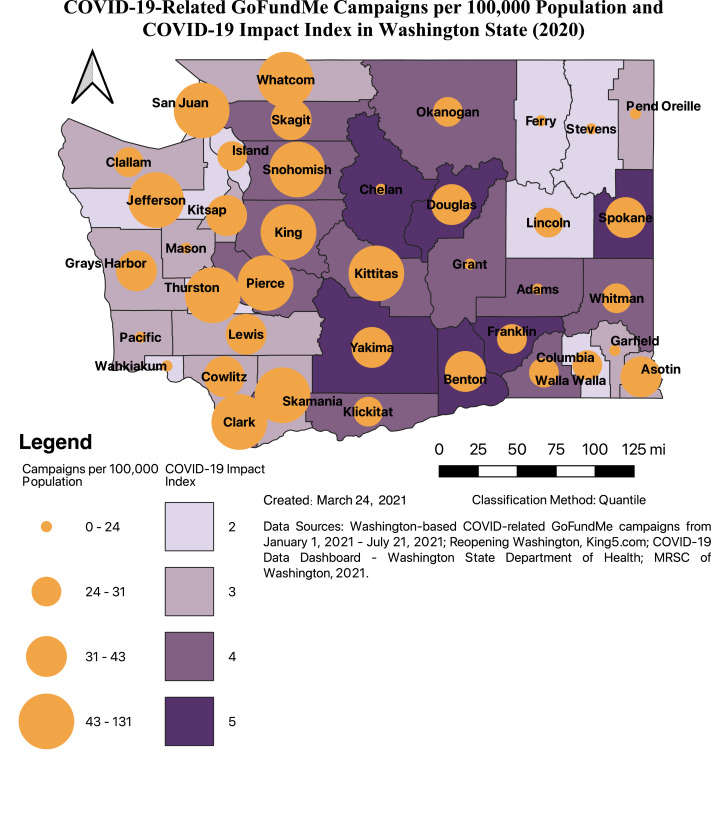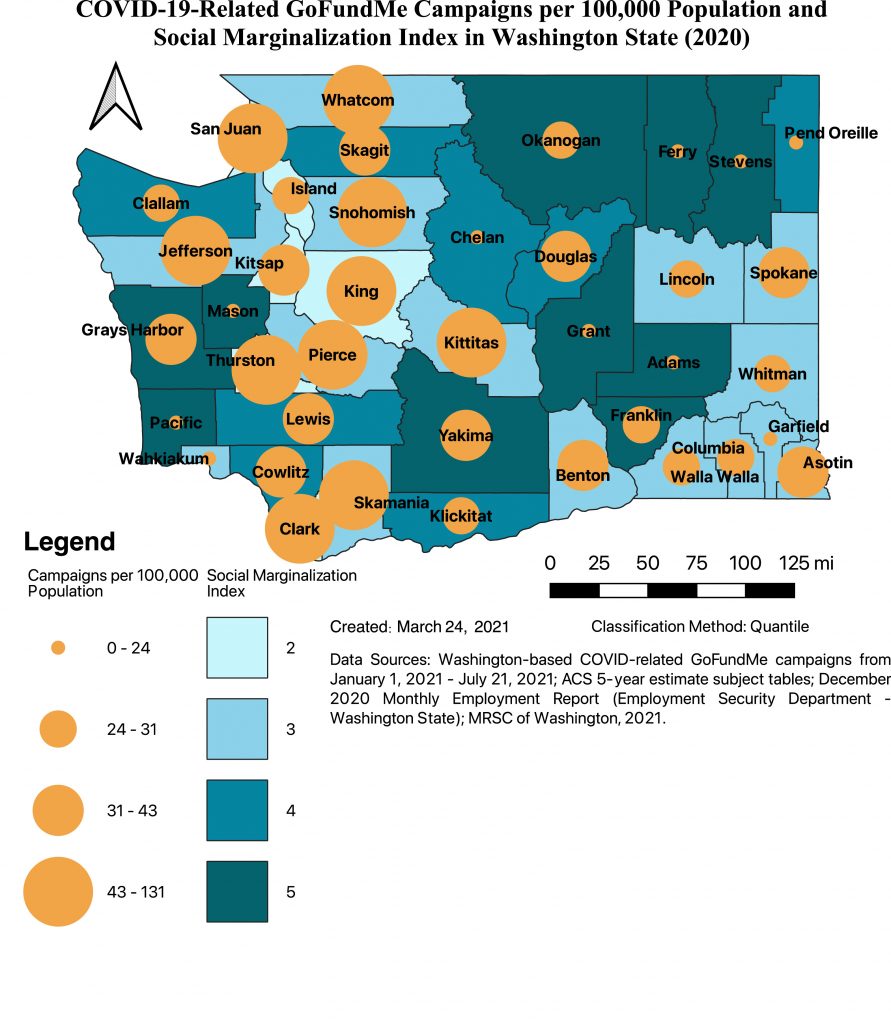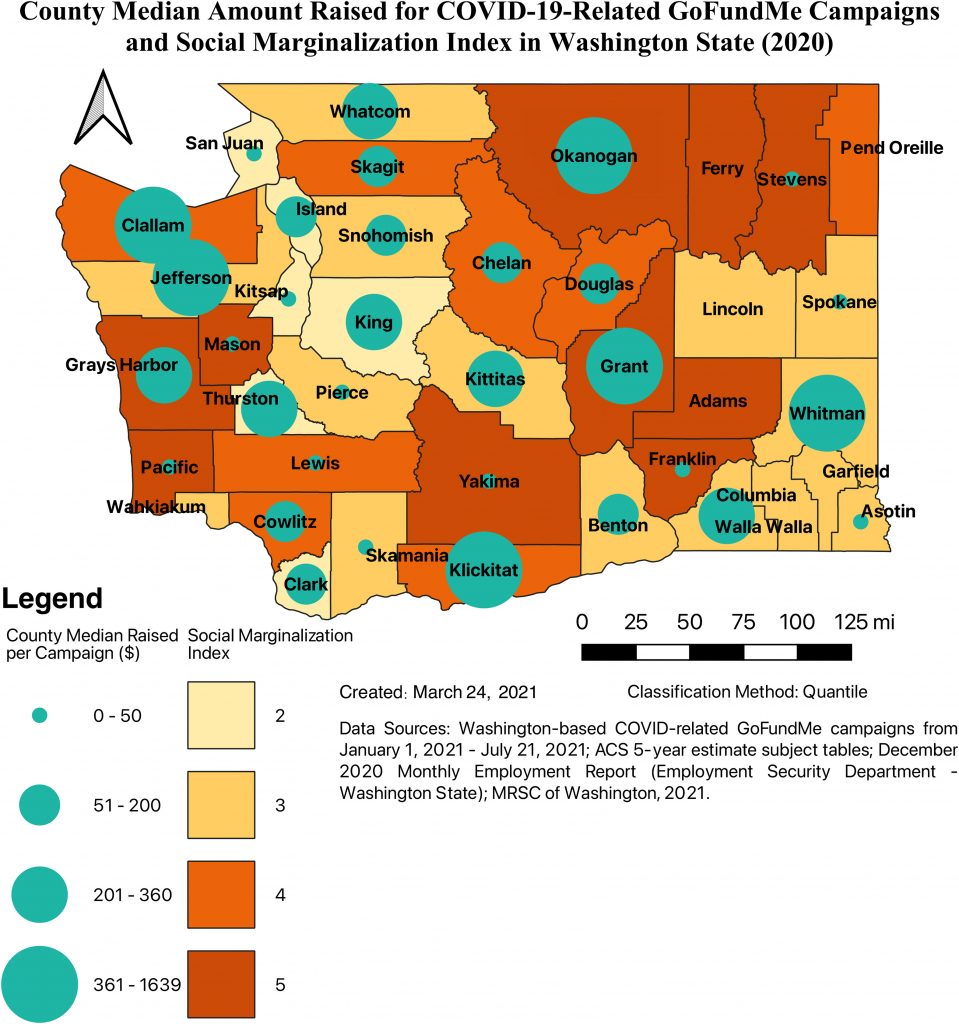Digital crowdfunding campaigns could exacerbate socioeconomic disparities if policymakers rely on them to evaluate community needs.
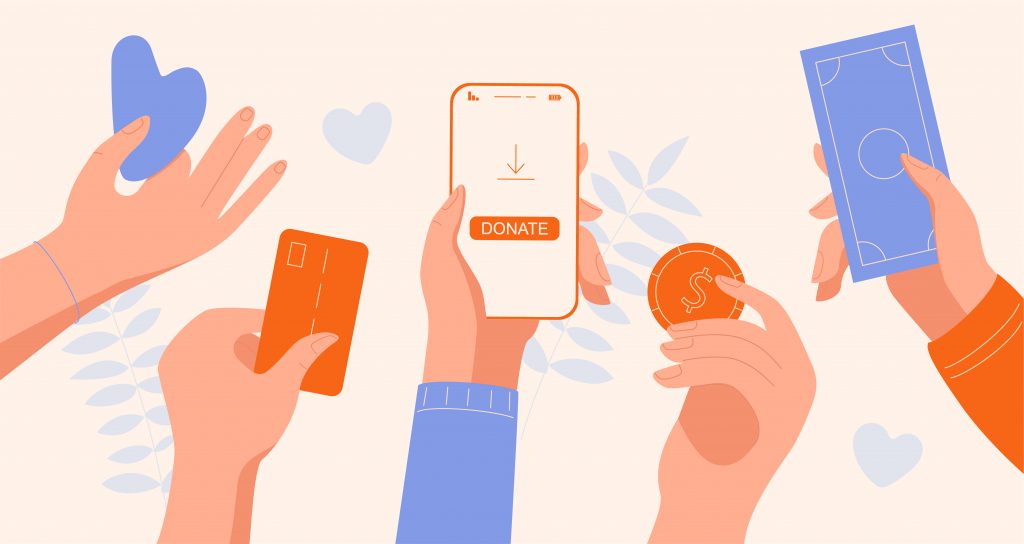
Previous research has suggested data from crowdfunding campaigns could be an effective indicator for policy-makers to decipher which communities had the greatest needs during times of crisis. However, University of Washington researchers posit that crowdfunding campaigns like GoFundMe will likely show “a distorted perception of need” as those with the highest need are likely missing from the data.
Earlier this year, Social Sciences and Humanities Open published Inequity in Washington state covid-19-related crowdfunding. Cadence Luchsinger (COPHP MPH ’21), Nora Kenworthy, Jin-Kyu Jung, and Mark Igra examined national GoFundMe data from the first seven months of the pandemic.
They used a custom web-scraping tool that searched each U.S. zip-code for all campaigns that contained the terms ‘COVID’ or ‘coronavirus.’ After filtering out irrelevant accounts, they eventually yielded 3,832 campaigns from Washington state. They then analyzed the number of donations, amount raised, and average donation size per campaign.
Populations in counties with less social marginalization actually produced more GoFundMe campaigns than their more socially marginalized counterparts
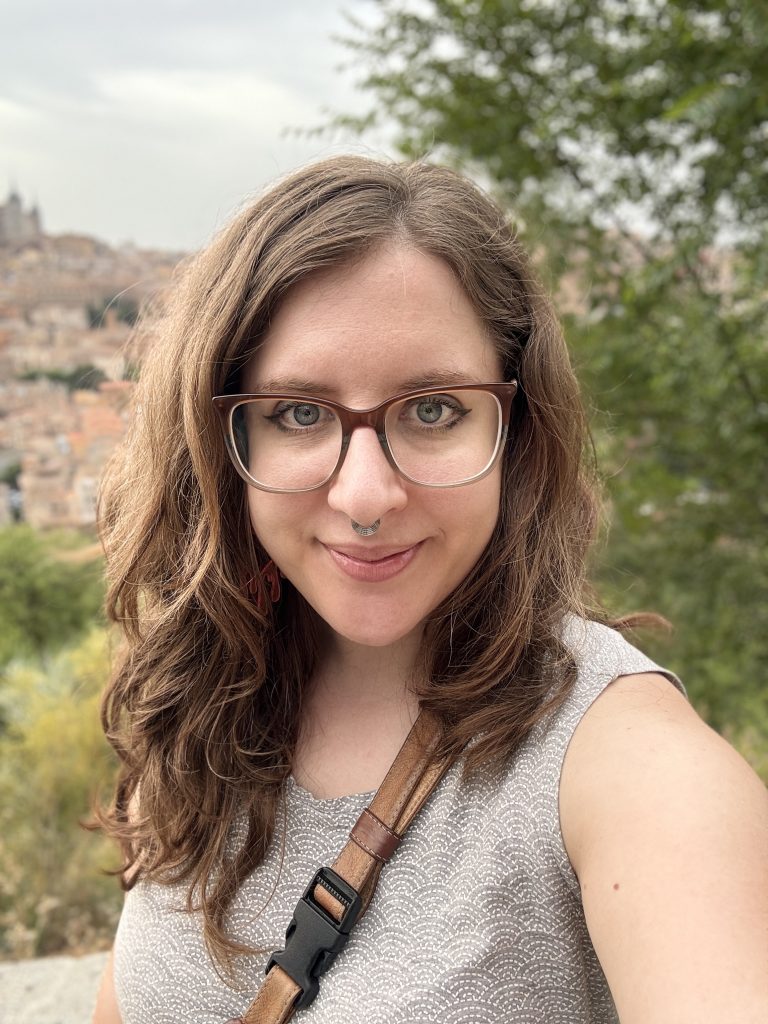
The researchers attributed the disparity to systemic barriers likely faced by marginalized populations—such as having less access to necessary technology, smaller social networks from which to draw financial support, and the experience of racism.
Regardless of county, Washington residents tended to see limited success with COVID-era crowdfunding. Despite their popularity in 2020, GoFundMe campaigns across the state were rarely successful in reaching their monetary goals. The coauthors explained, “The average campaign for counties highly socially marginalized and impacted by COVID-19 raised a median of only $50, while counties with low social marginalization and COVID-19 impact raised $45; these outcomes showed generally very low rates of success in garnering funds.” Nearly 40% of campaigns went without receiving a single donation.
“Policy-makers should be advised to use crowdfunding information with extreme caution when considering it as a useful tool in assessing community needs within counties and allocating resources, because those with the highest need likely are not being represented in this data due to lack of access.”
-Cadence Luchsinger, Nora Kenworthy, Jin-Kyu Jung, and Mark Igra
All four coauthors are affiliated with the University of Washington.
Cadence Luchsinger graduated from the Community-Oriented Public Health Practice MPH program in 2021, is now an International Social and Health Consultant at Earth & Equity in Seattle. Nora Kenworthy and Jin-Kyu Jung are both faculty at UW Bothell, and Mark Igra is a UW Sociology PhD candidate. Kenworthy’s book, Crowded Out, explores the national consequences of digital crowdfunding and is available now.
